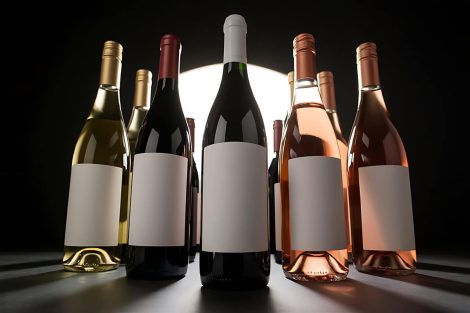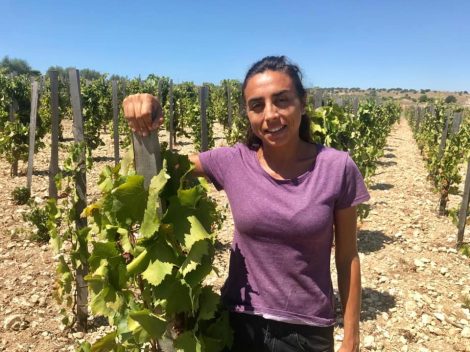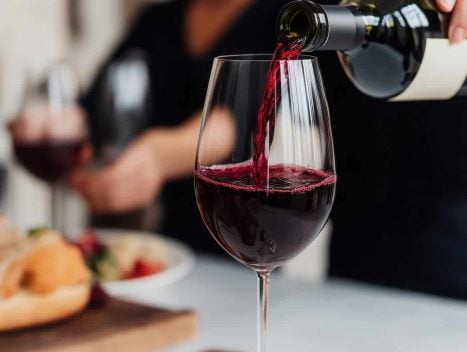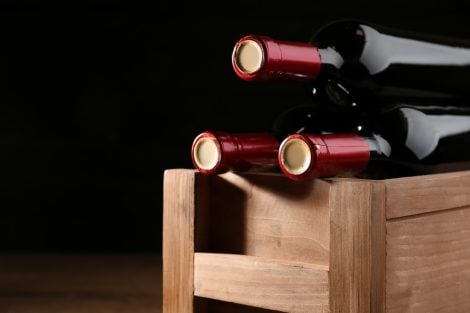Nussbaumer, Alto Adige gewürztraminer
Although the first vintage of Nussbaumer dates back to 1990, it was with the development of the line of selections and with the full operation of Willi Stürz, in 1999, that the idea of the Nussbaumer we know today was born and which won the Tre Bicchieri award for the first time, a long series that today totals 20. Here's a memorable vertical tasting.
2018
The vintage. The season started out slowly and a bit lazily, due to a not particularly hot winter climate, and budding happened relatively late. Subsequently the heat that characterised April and May, together with the good water supply, led to an early flowering and a perfect fruit set which gave a very abundant harvest. Fortunately, the very hot and dry summer was balanced by abundant rains just before the harvest, which took place between 20 September and 4 October, under a dry and sunny climate.
The wine. Beautiful looks with a very intense straw colour and illuminated with bright green flashes. Initially a little shy on the nose, it opens quickly, generous and harmonious, with citrus hints, memories of fresh grass and sage that then leave room for the beautiful sensations of rose water: still very young yet so promising. On the palate the unexpected vitality and freshness in such a rich and pulpy wine truly amaze.
2017
The vintage. Germination happened earlier than the average, thanks to a very hot end of March and early April. This climate continued throughout May and drought was also added in June which made flowering and fruit set more difficult, limiting production. A slightly wetter July was not enough to reverse the situation, because it was followed by a hot and very sunny August. The small showers at the beginning of September unlocked ripening but did not remedy the lack of juice in the berries. Starting immediately after mid-September and ending around October 5th, the harvest was rather stingy even if healthy.
The wine. The appearance did not differ much from 2018, as well as the sense of smell that immediately offers the classic and intense notes of rose, lychee and slightly less insistent sensations of orange peel. Enriching the profile are also aromas of honey and pink pepper with a touch of saffron in the finish: even wider and more open than the previous. The mouth also in this case manages to conceal its fatness and its alcohol content while not denying its nature made of great pulp and richness. It is impressive to see how the very long finish naturally brings such important material.
2016
The vintage. The end of winter and all of spring recorded quite a variable climate but without creating worries for the budding and flowering that took place in the average time, although with a delay compared to 2017. The rainy months of May and June caused large concerns to winegrowers who had to fight against pathogens, with repeated treatments. In general, a rather cool summer delayed the phenological phases and therefore the fruit setting was substantially late. A splendid autumn, with the months of August and September that alternated mild daytime temperatures with quite cool nights, brought healthy grapes to perfect physiological ripeness. The harvest took place between the 5th and 21st of October.
The wine. Definitely less showy than 2015 that some have defined as intellectual. The golden hue in fact becomes more timid and the nose, in general, appears less exuberant but certainly no less fascinating. Rose petals leave room for white flowers (hawthorn and lily of the valley) and the fruity part disappears in front of the strong spiciness (cumin, anise and pink pepper) with even some mineral appeal. On the palate, it boasts an unusually vertical shape, placing balance and freshness at the centre of attention. A great interpretation of a later and less hot harvest.
2015
The vintage. Wanting to define 2015 in a nutshell, we could say that it is an early and basically hot vintage but without any excess. A mild spring immediately announced the colour, giving way to the various phenological phases (budding, flowering, fruit set, veraison) with a slight advance on the averages of the last ten years, to be considered in turn earlier than the harvests of the past. In actual fact, apart from the early vegetative growth that lasted until the harvest - from September 16th to October 6th - the very regular seasonal climate, with cool nights, made it possible to harvest ripe and healthy grapes without haste.
The wine. Visually it's already possible to see the difference with the previously tasted millesimes: the intense golden hue betrays that we are in the presence of a rich and opulent white, full of life. The nose is intense, enveloping and complex, with varietal notes expressed with boldness (dog rose, lychee, orange peel and mandarin), with distant notes of spice (cinnamon and ginger) and fruit (peach and medlar). In the mouth it opens with volume and wide with a nice creaminess. Despite a right acid balance, we are facing a great Gewürztraminer which, unlike 2016, makes glyceric richness its strong point.
2014
The vintage. It was complicated from a climactic point of view, intense and frequent rains characterised the entire vegetative phase, creating quite a few cryptogamic problems and more. For example, one physiopathy occurred, which was probably due to the climate peaks, which caused the rachis to dry up, interrupting nourishment of the fruits by the plant and thus blocking their ripening. Fortunately the members of the Nussbaumer project work on small plots and were therefore able to carefully monitor the harvest, removing the green grapes during the sorting phase. The wonderful end of the season allowed us to wait a long time for the harvest to bring ripe grapes to the cellar which saved the quality of the vintage at the cost of a very reduced production.
The wine. It's not possible to say that the 2014 Nussbaumer was in no way affected by the vintage, but finding such a wine is simply amazing. This is an out-of-the-box interpretation, which offers a wine with a more Nordic appearance, amd one of the leitmotifs is green. The eye perceives a straw yellow colour of medium intensity with green reflections, while the nose revolves around unusual hints of herbs, fresh fruit, citrus (grapefruit) and complex flint. The acidity of the palate tends to erase the richness and leaves us with a very drinkable wine that pays the price of the harvest a little in persistence.
2013
The vintage. It started very slowly, with the laziness of previous decades, before global warming took over. The late winter rains combined with temperatures that remained somewhat low led the vine to sprout with a certain delay. The other vegetative phases were also slightly delayed. However, 2013 looks like a balanced vintage, without the advances that increasingly occur in the wine field. Fortunately, during summer, there were very sunny days and the heat peaks that allow the plant to perfect its ripening, but which can also cause some scorching on the berries. Nevertheless, the harvest began at least ten days later than average (from the 3rd to the 25th of October)
The wine. Nussbaumer 2013 is the first of the series that cannot lie about its age, but given the perfect evolution of the other vintages it could also be a case of a lower seal of the cork stopper. Visually we have a wine with intense and marked golden tones, which on the nose treads along a very baroque line, with aromas of canned peach and honey, but also with unexpected tones of undergrowth. The varietal is well present but the vitality and complexity of the best vintages is absent. The taste ends with a rich and pulpy mouth which lacks just a little panache.
2012
The vintage. Spring, which started early with somewhat mild temperatures, caused an early awakening of the vine, which sprouted well in advance. April was quite cool and slowed the vegetation which returned to average with the time of flowering. The summer enjoyed regular and never excessive weather, with regular rains at the most appropriate times, which allowed the plant, in good health, to grow harmoniously and without stress. Only an important heatwave at the end of August came to reduce yields a little, without however compromising good ripening. The harvest, which took place in excellent conditions and in normal times (between 21st of September and 8th of October), resulted in fresh and balanced wines.
The wine. The appearance is still full of green reflections, which clearly demonstrates how young and vital the wine still is. After a slightly reduced beginning, the aromas develop in great harmony with the floral character in the foreground (pink with orange blossom in the background). Subsequently, complex spicy aromas of ginger and anise arrive, reminiscent of the Alsatian pain d'épices, with a finish enlivened by orange peel. On the palate the wine finds its strength in the masterful balance where richness and sweetness are well present and are supremely balanced by the sensations of freshness and the right bitter notes.
2011
The vintage. With one of the hottest starts of the season in recent decades, the vegetation started very early: the budding took place at a particularly early time. In addition to rather warm temperatures, the region experienced a long and unusual period of drought for this time of the year, which kept the vegetative advance unchanged. Only at the end of June did the long-awaited rains finally arrive and a basically cool July slowed down the vegetation a bit. Then a very hot August and a dreamy September with alternating warm and sunny days and cool nights led to a beautiful early harvest (13-30 September) with healthy and well ripened grapes.
The wine. The final result is a wine of almost ten years that only feels like two and that only asks to continue to mature for at least another ten. The golden dress is imbued with lively and bright tones, while the nose offers with natural insolence all the paraphernalia of the great gewürztraminer, demonstrating to all effects that it has the complexity of the great white: pink, yellow flowers, helichrysum, pepper and ginger. The mouth, less baroque than other vintages, is elegant and harmonious with a well present vein of freshness. An uncommon persistence is noteworthy.
2010
The vintage. Here is another vintage without extreme weather and with a seasonal climatic trend that we could define as balanced and which led to a regular ripening compared to the past but quite late if, instead, compared to others before it. The regular climate of the end of winter led us to a rather late bud break. The temperatures and rains of the following months, which were normal, with the exception of a few very hot weeks between June and July, kept the whole vegetative phase (from flowering to ripening) slightly delayed (harvest from September 27 to October 14). The significant changes in temperature between day and night in the last period preserved the aromas of the grapes, while those weeks of summer heat caused a loss of production, giving us smaller bunches and berries than usual but particularly concentrated.
The wine. 2010 can count on the qualities of freshness that usually characterise the later and fresher harvests. It is a wine that speaks softly and that gives us less explosive floral aromas that leave room for refined memories of ginger and a beautiful and intense menthol note. The palate in turn reaffirms these characteristics of measure, but also of great longevity. As expected, on the palate it leaves a little aside the striking density of glycerin and sugars to amaze with its dense and progressive qualities, which lead it to a long finish that will have a lot to say in the near future.
2009
The vintage. The climate was undoubtedly benevolent with this vintage, so much so that we can count 2009 among the great harvests for South Tyrol and especially for gewürztraminer. After a vegetative start that saw the budding take place in the usual times, if not already with a very slight advance, in 2009 the sun and heat never failed their presence, especially in late spring and throughout the summer, accelerating the whole vegetative cycle. The harvest, weeks ahead of which had good nocturnal temperature variations, took place almost entirely during the month of September (17 September-1 October). The grapes brought to the cellar were intact and of great quality with important sugar gradations, combined with good acidity.
The wine. In addition to a still very bright and lively look that runs through all shades of gold, the Nussbaumer 2009 has an enveloping and complex nose that in addition to floral and spicy notes, puts at the centre of attention beautiful measured sensations of ripe fruit (medlar, yellow peach and apricot). After a few minutes in the glass something strange and unexpected emerges - during the entire period before bottling, the wine has never seen barrels or barriques - smoky notes and even burnt wood emerge in aged gewürztraminer. The mouth appears immediately exotic with the richness and fattiness of great vintages, but without any heaviness.
2008
The vintage. After starting with a bud break that took place in perfectly normal times, the 2008 vintage showed a generally adverse climate. Spring and summer were much less lenient, with temperatures that rarely reached or exceeded the seasonal averages, thus delaying the entire vegetative cycle (flowering, fruit set and veraison). Frequent and intense rainfall also occurred, which required additional care and work from the winegrowers and which caused the rachis to dry out, along the lines of 2014. The numerous hot and sunny days of late summer and early autumn saved the harvest that took place between the 19th of September and the 15th of October, and which can be considered long and laborious but overall very satisfying, especially in the higher elevation vineyards, where maturation usually takes place later.
The wine. The nose of evident freshness leads us towards aromas of mint and arugula, which characterise the less hot vintages overall. Then, although less exuberant than usual and more in line with the characteristics of the vintage, also fruity and floral memories arrive. In the former case, jasmine and white flowers tend to replace the rose, while in the latter, white melon and apricot emerge. In the finish, delicately smoky tertiary notes make their appearance. There is certainly no lack of richness on the palate, but the contribution of acidity gives the whole a nice drinkability that rests on fresh and almost spicy sensations.
2007
The vintage. The mild winter pushed the vegetation to restart well in advance. During the spring, the climate did not undergo any particular changes, at least in its initial half, and therefore the temperatures in April and May were very warm, allowing the vine to retain the advance accumulated from the beginning of the vegetative period. Germination and, above all, flowering and fruit set, which took place early and with great weather, ensured a considerable production, quantitatively. With the month of June, abundant rains arrived, accompanied by a drop in temperatures. Fortunately, the vineyards, while slowing down a little, was unable to dissipate the large advance accumulated previously, also because the heat returned in July. An unusually cool month of August dis not prevent one of the earliest harvests in history from starting on September 1st. Around the 20th of the month, people rejoiced because all the grapes were in the cellar and the sugar levels were very high.
The wine. Already on a quick visual examination, the golden colour betrays that we are in for a generous and warm vintage. The nose offers a riot of aromas with spicy (ginger and pepper) and fruity aromas (grapefruit and medlar) that lead to a baroque finish, where the notes of honey and pastry characterise the 2007 Nussbaumer. On the palate the richness of the vintage gives a clear tactile sensation of fattiness, almost creaminess, which fortunately finds in the slightly bitter vein of the grape a factor capable of balancing the long finish.
2006
The vintage. A long and very harsh winter strongly slowed down the vegetative restart: budding, which took place late, gave the start to a season that could never make up for its delay, also because it certainly could not be defined as a hot vintage. Flowering and fruit set occurred without major problems, thanks to a dry month of June, marked by temperatures in the seasonal average. August, for coolness and high humidity with frequent rains at the order of the day, certainly did not help to shorten the ripening times, luckily an ideal August helped to bring to harvest (started on 25th of September and ended on October 19th) of healthy grapes with a rather high sugar content.
The wine. It is amazing to note how this gewürztraminer, who is now over 14 years old, manages to show off excellent vitality. Certainly the aromas have broad tertiary connotations ranging from undergrowth to spiciness, and dried fruit (walnut). However, there are still some beautiful floral notes to remove any doubt about the future condition of the wine. In the mouth it has a wide shoulder and shows great solidity, but in general it plays more on strength than on finesse and elegance, even if creamy sensations do return in the finish.
2005
The vintage. The period between the end of winter and the beginning of spring was quite humid with abundant rainfall which made the vegetative restart a little more lazy. The germination therefore took place slightly late. In the following months, throughout the spring and until the beginning of summer, the climate remained rather cool, leading the vine to maintain the initial delay in all phenological phases. 2005 can therefore be defined as a regular but somewhat lazy year. Only with the month of July did the weather get better and temperatures rose significantly. In August, the heat continued to lend fundamental help for ripening and scarce rainfall allowed the winemakers to face a healthy and rich harvest, although slightly delayed (20 September-6 October).
The wine. Still rich in green reflections, one immediately perceives that this Nussbaumer 2005, still very young, will lead us to discover different facets of gewürztraminer. The nose, very fascinating in its peculiarity, is imbued with sensations reminiscent of an auslese Riesling from the Moselle, with the mineral character at centre stage (hydrocarbons and slightly smoky base). Only in the finish do the elegant hints of sage bring us back to the vine of origin. The mouth, delicate and harmonious, plays the game of freshness and persistence.
2004
The vintage. Unlike the previous, 2004 is a regular year where there was no room for excess. The rather cold climate but without peaks of any kind led to a slow year in development, marked by delays in all phenological phases, from budding to veraison, from flowering to fruit set. The persistence of lower temperatures, fortunately without major meteorological accidents, allowed the plant to slowly ripen its fruits. The rather long harvest lasted from 4th to 25th October. The grapes brought to the cellar were healthy, with good ripening parameters and without extremes.
The wine. The dress is still young and the aromas, although less elegant than other vintages, make the vine perfectly legible through the unmistakable aromas of rose and apricot. The olfactory picture is good, but without the magic of the most successful vintages with less delicate spicy notes than usual. Structure and acidity are present on the palate, but the alcohol slightly burns the finish and makes it a little more austere than usual. The long still young finish leaves ample space to find the best balance.
2003
The vintage. The 2003 season was made unmistakable because of the great heatwave that hit Europe in several successive waves that did not spare even South Tyrol. However, the mitigating factor of the mountains and altitude allowed the vineyards and especially the gewürztraminer, which loves the heat and the sun, to achieve excellent results. Obviously, the great heat of June, then of July and finally of August meant an early vintage in all phenological phases from budding to ripening. The amazing fact to note is that the grapes managed to retain a good amount of aromas and a fair acidity, which is quite rare in such extreme harvests (between 11 and 30 September) in regards to climate.
The wine. Even if the colour is less brilliant than usual, the wine remains young. Such a particular climate could not fail to leave traces from an organoleptic standpoint. The sign of 2003 is immediately perceptible on the nose which appears very different from all the other millesimes tasted. The varietal aromas, much more timid than usual, give way to a particular character for the grape that expresses iodized and marine aromas, with beautifully complex hints of caper leaves. The palate is distinguished by combining the usual richness with a nice savoury vein.
2002
The vintage. The climatic trend had many similarities with 2012. After a winter tail that delayed bud break, the weather became more forgiving, without ever falling into excess. A spring with normal temperatures for the period and with the right rainfall gave a move to the vegetation bringing it back in line with the seasonal averages: flowering and fruit set took place without incidents, ensuring a harvest with balanced productions. A good alternation of warm and sunny days and nights refreshed by the cold air coming down from the Alps made it possible to harvest healthy grapes with interesting parameters between September 23rd and October 9th, especially in regards to acidity.
The wine. Going back to tasting Nussbaumer 2002 after 2003, one immediately understands how the climate of the vintage can characterise the wine even in its tertiary aromas. 2002 brings us back to classic and reassuring aromas with splendid notes of rose and fresh flowers in the foreground and also hints of honey and shortcrust that go hand in hand with the less frequent memories of basil. The very refined palate manages to combine richness and freshness with skill.
2001
The vintage. With the 2001 vintage we return to seasons with a variable climatic trend. Having started on a regular basis, the season included worry-free sprouting. The following months were characterised by variability in both temperatures and rainfall, however not particularly abundant. The problem was precisely the lack of insolation which partially slowed down the vegetative cycle and required work in the vineyards to avoid serious cryptogamic issues. July and August did not bring significant improvements, with even a rather humid and not very sunny month of August. A particularly cool beginning of September further slowed down the ripening, pushing the harvest towards October. On October 3rd, at the end of a good season even if stingy as far as sun, the harvest of the grapes started (and which continued until the 22nd of the month). These were a little less sugary than usual, but with excellent acidity.
The wine. The gold-coloured dress shows slightly less brilliant reflections than the younger vintages. The nose of excellent complexity appears less exuberant, offering with great measure its notes of honey and dried fruit combined with less classical aromas reminiscent of incense, smoky and undergrowth. The palate, while not presenting the richness of the hottest vintages, is appreciated for a balance that plays on the coexistence between the fattiness of glycerin and sugars on the one hand and on the fresh acidity and light bitter sensations on the other.
2000
The vintage. 2000 is another stellar year for gewürztraminer. It belongs to the ranks of those harvests kissed by the sun and partly also by the heat, which the grapes of Termeno are in such need of. But to give the best the wine also needs to preserve a good freshness, so it loves summer and autumn temperature ranges. The 2000 vintage, with its seasonal course made up of hot and above all sunny but in no way ever suffocating summers and weeks, close to the harvest, caressed by the morning sun and cooled by the alpine breezes of the night, was perfect. The harvest, which lasted between the 18th of September and 6th of October, produced beautiful grapes, rich in acidity and with balanced sugars.
The wine. The gold-coloured hues shine with a thousand fires, while the nose offers a harmonious and classy whole that enters on floral notes with rose petals in the forefront, then hints of fruit (apricot) make their way and finally the spicy memories with ginger in the first place. But the Nussbaumerhof 2000 finds its charm in the refined and intoxicating scents of saffron. The sip opens onto a tactile richness that gives a slightly dense sensation that, however, leaves room for salty memories, but also fresh and tantalizing on the tip of the tongue: a great timeless white, good young and at twenty.
1999
The vintage. On paper, 1999 should have been a sort of twin brother of 2000, since the meteorology of the two vintages had a partly parallel journey. In reality these were undoubtedly two beautiful harvests, but small differences contributed to the difference in style between the two: 1999 had more rain and less sunshine during August. Although the harvest dates are more or less overlapping - in 1999 the grape harvest began on September 22nd and ended on October 7th - the analytical data of the wines confirms that 1999 was a little less rich (0,5 less alcohol, less residual sugar and a little more fixed acidity) even if it still ranks among the great vintages of Nussbaumer.
The wine. At the milestone of twenty years, the 1999 Nussbaumerhof is lucid and in good health. The wine has a golden nuance - obviously ... - but it maintains its beautiful aromatic character where spices, honey and orange marmalade meet the floral notes of rose and jasmine still present although a little withered. The hints of undergrowth, white truffle and porcini mushrooms add complexity. Even the mouth, decidedly fattier and less dynamic than in 2000, speaks of a great wine to drink today and for the next 2-3 years.

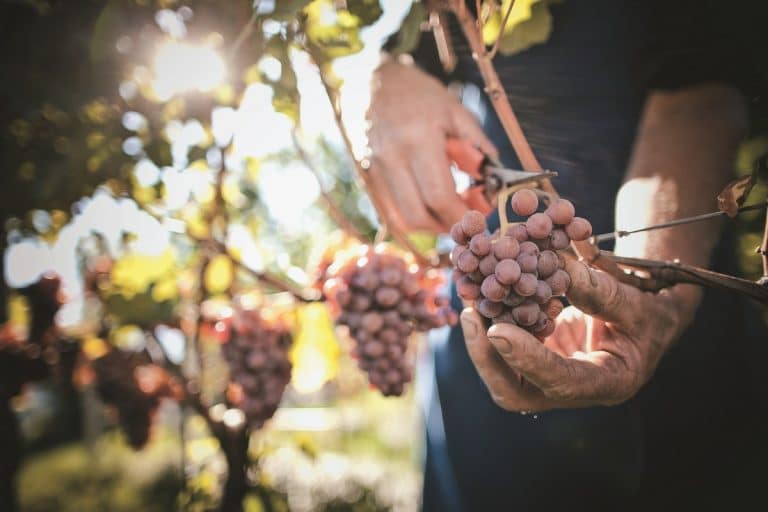
 Fewer bottles, more by-the-glass: how to build the wine list of the future
Fewer bottles, more by-the-glass: how to build the wine list of the future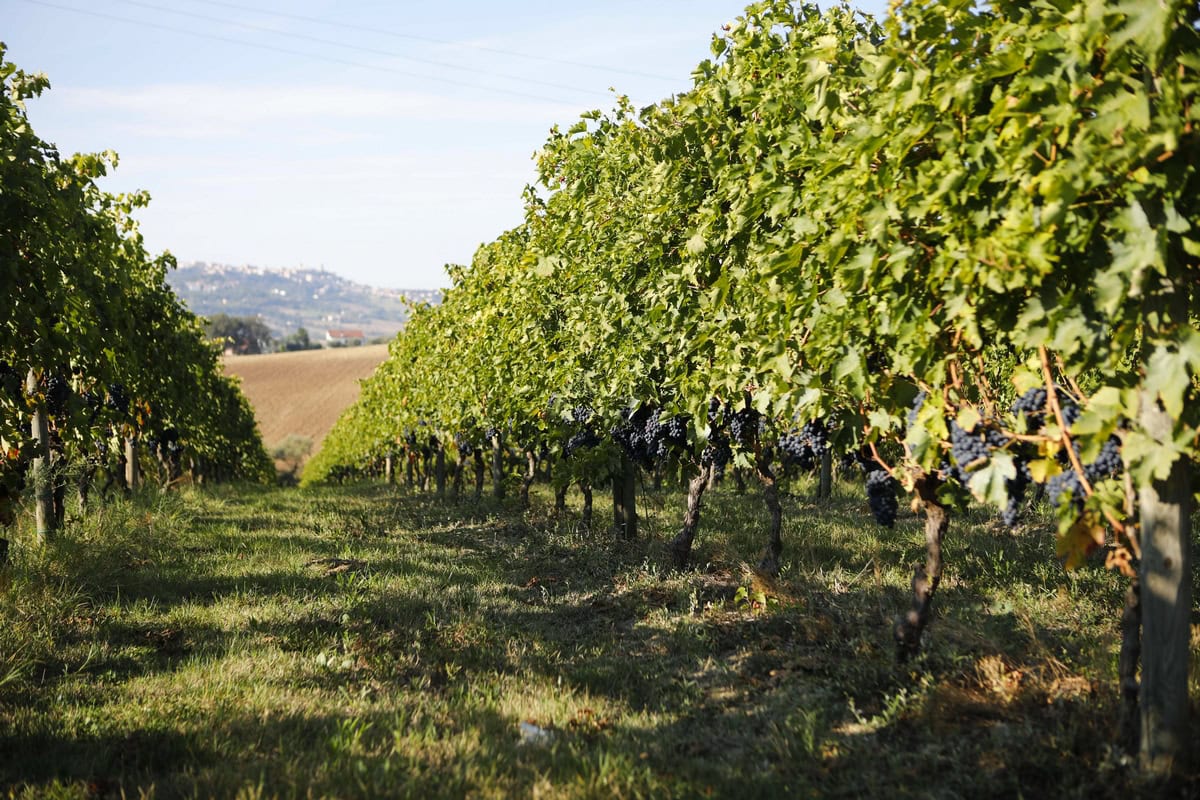 The Moncaro collapse impacts Marche wines. But average price rises
The Moncaro collapse impacts Marche wines. But average price rises Trump’s first trade war cost Americans $27 billion. USDA analysis
Trump’s first trade war cost Americans $27 billion. USDA analysis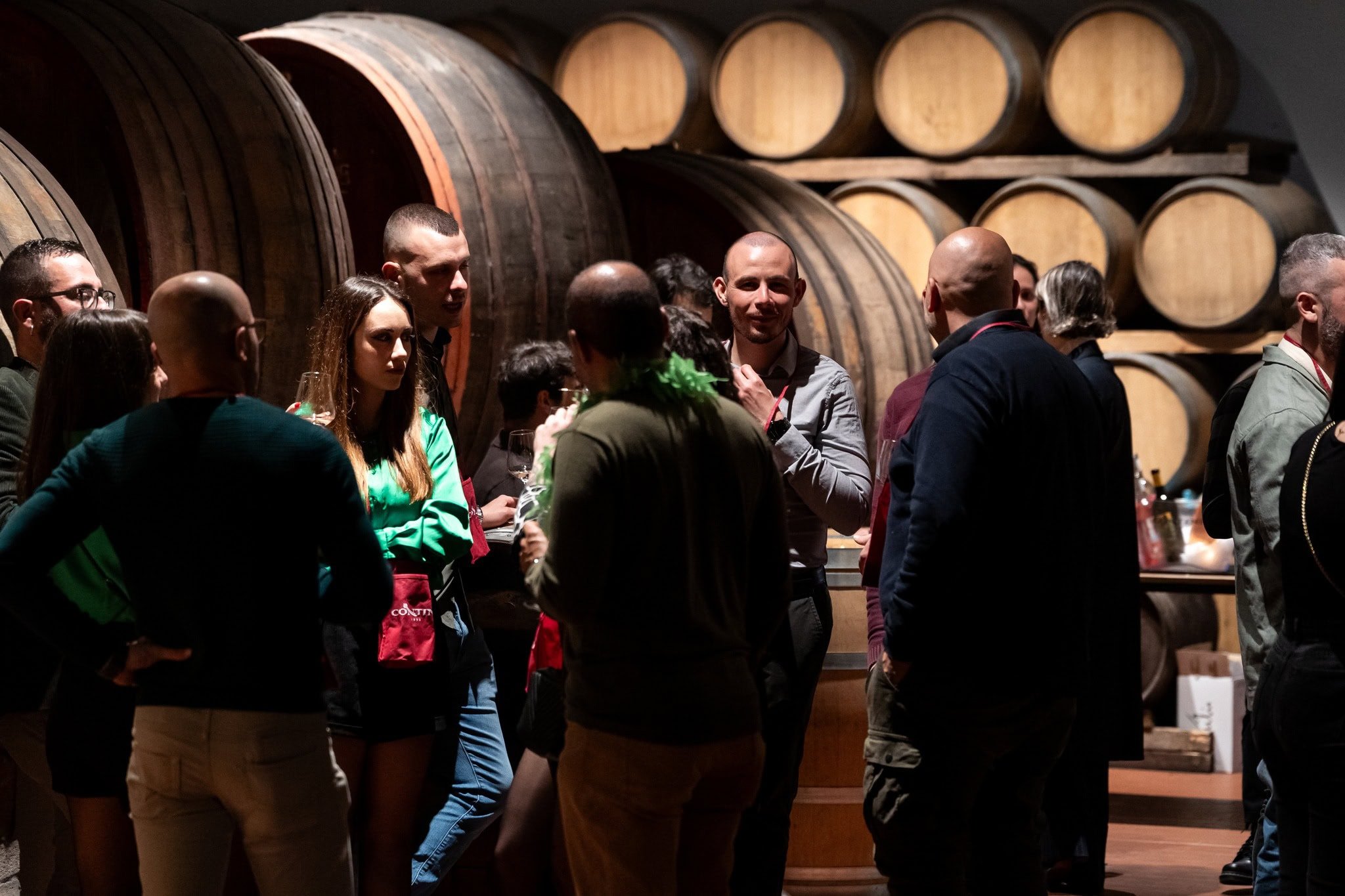 Here are ten Rare Wines you absolutely must try
Here are ten Rare Wines you absolutely must try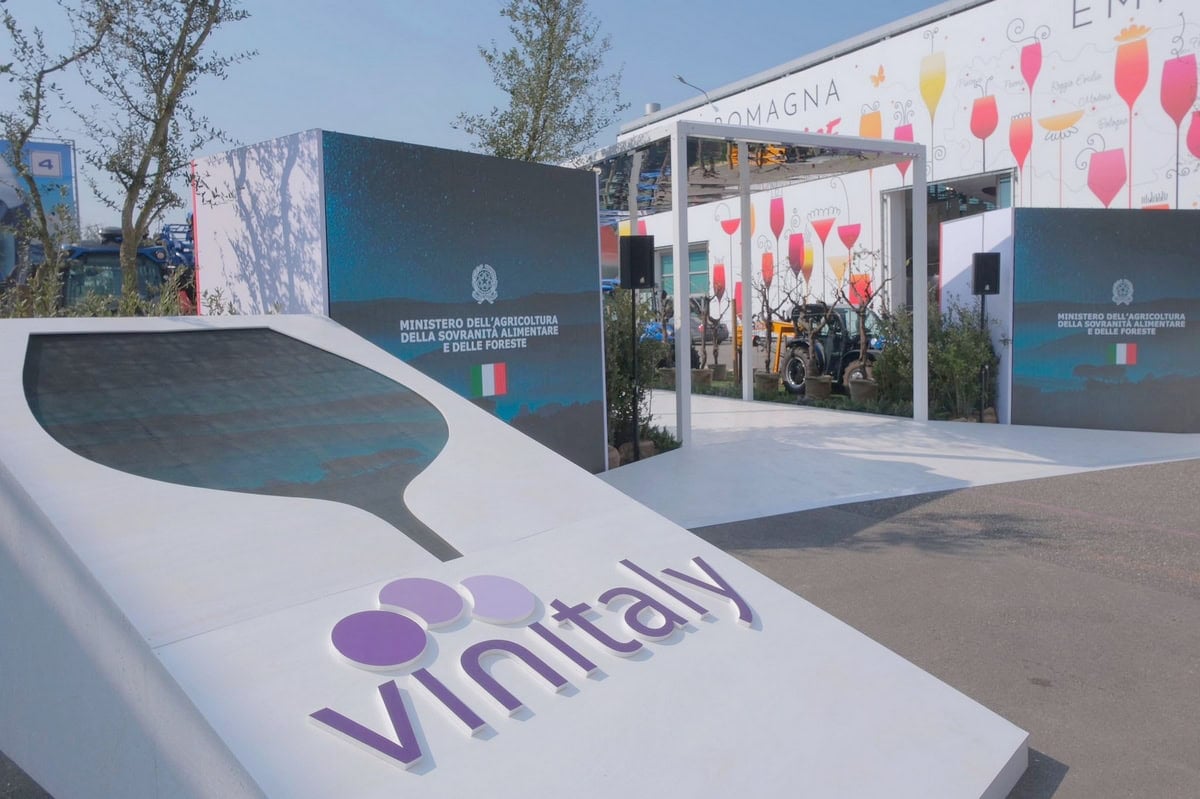 The “Tariff Vinitaly” closes with 97,000 attendees: one third from abroad. See you on 12 April 2026
The “Tariff Vinitaly” closes with 97,000 attendees: one third from abroad. See you on 12 April 2026
